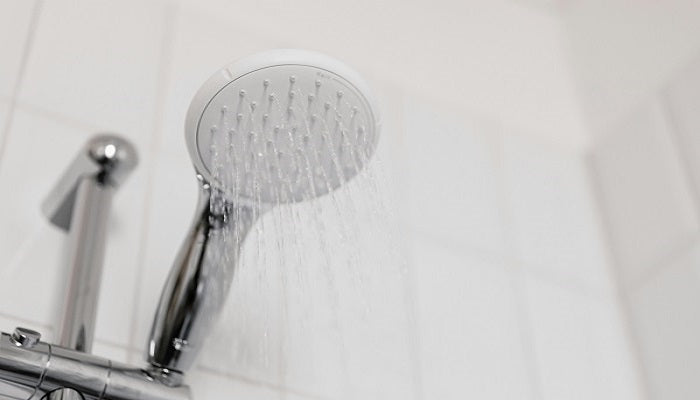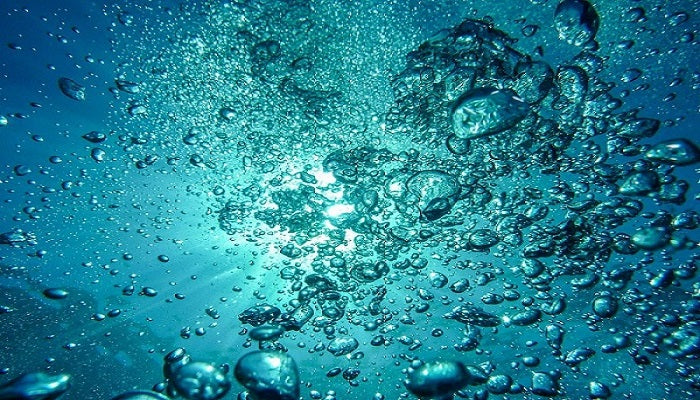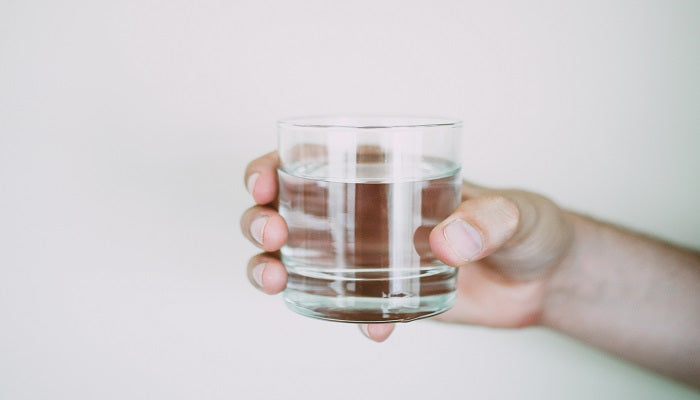Introduction: Why Your Shower Filter Matters
Have you ever noticed your skin feeling dry or your hair tangled after a shower?
The culprit could be your water. Many households unknowingly use hard water — water that contains chlorine, heavy metals, and other impurities. When these unfiltered contaminants come into contact with your skin and scalp, they can cause dryness, itching, and irritation — and in severe cases, may even contribute to eczema or hair loss.
That's why more people are turning to filtered shower heads — one of the simplest and most effective ways to improve water quality at home.
But what exactly makes these filters work? The secret lies in the filter cartridge, the small but powerful component that traps impurities and softens your water.
In this article, we'll explore how shower filter work, what they're made of, when you should replace them, and how to choose the best one for your home — so you can enjoy cleaner, softer water every day.
What Is a Shower Filter?
A shower filter cartridge is the heart of a filtered shower head. It purifies water through physical and chemical filtration, removing impurities, chlorine, and heavy metals before they reach your skin.
Physical Filtration
Physical filtration works like a fine sieve, blocking larger particles such as sand, rust, and sediment while allowing clean water molecules to pass through.Common physical filtering materials include:
- PP Cotton Filter: Traps large particles like rust and sand to prevent clogging of the inner filter layers.
- Ceramic Filter: Filters impurities through tiny pores (around 0.5 microns).
- Stainless Steel Mesh: Prevents filter materials from leaking and blocks large debris.
- Activated Carbon: Known for its porous "sponge-like" surface, activated carbon absorbs chlorine, odors, organic compounds, and chemicals through physical adsorption. It's highly effective at removing residual chlorine and improving the smell, taste, and softness of water.
Chemical Filtration
Chemical filtration, on the other hand, relies on chemical reactions to neutralize or remove invisible contaminants. Instead of just "blocking" them, it changes their chemical structure so they're no longer harmful.
Common chemical filtering materials include:
- KDF-55 (Copper-Zinc Alloy): A blend of high-purity copper and zinc granules that use a redox (oxidation-reduction) reaction to convert chlorine into harmless chloride and deactivate heavy metals like lead and mercury. It also helps inhibit bacterial growth.
- Calcium Sulfite: A fast-acting chlorine neutralizer that remains stable under high temperatures, making it ideal for shower use. It reacts instantly with chlorine, turning it into harmless mineral salts and reducing skin irritation.
What's Inside a Shower Filter?
Not all shower filters are created equal. Depending on the design, the internal composition of the filter cartridge can vary. Generally, they fall into two main types:
Cotton-Type Filter
Made primarily of PP cotton or fine fiber material, this type removes visible impurities like rust, sand, and sediment through physical filtration.
Pros: Simple, affordable, fast water flow.
Cons: Cannot remove dissolved contaminants like chlorine or heavy metals.
Compound Filter Cartridge
These multi-layered filters combine several filtering materials to target both visible and dissolved impurities. A typical compound filter includes:
- KDF-55: Removes chlorine, heavy metals, and inhibits bacteria.
- Calcium Sulfite: Neutralizes chlorine effectively even in hot water.
- Activated Carbon: Adsorbs odors and organic chemicals.
- Mineral or Ceramic Balls: Help soften water and balance pH.
However, more layers don't always mean better performance. While some products boast "ten-layer filtration," the real purifying power primarily comes from KDF-55 and Calcium Sulfite — the two materials that handle chlorine and heavy metals. Other layers mainly improve texture and water feel.
How Does the Filtration Process Work?
Cotton-Type Filters
When tap water passes through the dense fiber layers, large particles like rust or sand are physically trapped, allowing cleaner water to flow through.
They're effective for basic purification but cannot remove chemical contaminants such as chlorine or heavy metals.
Compound Filters
Inside compound filters, multiple materials work together for deeper purification:
KDF-55: Converts chlorine and metals into harmless forms via redox reactions.
Calcium Sulfite: Quickly reacts with chlorine in hot water.
Activated Carbon: Adsorbs odor and residual chemicals.
Mineral Balls: Help soften and balance the water's pH.
In short:
- If your area's water is hard or highly chlorinated, a compound filter is ideal.
- If you just want to remove visible particles, a cotton filter may be sufficient.
When to Replace Your Filter?
Most shower filter cartridges last 3–6 months, depending on several factors:
- Water usage: More showers = shorter lifespan.
- Water quality: Hard or chlorinated water wears filters faster.
- Filter type: Cotton filters last 2–3 months, while compound filters with KDF-55 or Calcium Sulfite last longer.
Signs It's Time to Replace Your Filter:
- Noticeable drop in water pressure (filter clogged with debris)
- Return of chlorine smell or unpleasant odor
- Color change in visible filters (yellow or brown tint)
- Dry or itchy skin and tangled hair after showering again
Pro Tips:
- In areas with hard water, replace every 3 months for best performance.
- If your shower hasn't been used for a while, replace the filter before resuming use.
- Regularly clean your showerhead nozzles to prevent clogging.
How to Choose a Quality Filter Cartridge
Choosing the right cartridge ensures both water purity and long-term performance. Here's what to look for:
1. Check the Filter Media
High-quality filters clearly list KDF-55, Calcium Sulfite, or Activated Carbon as their main materials.
For example, AquaNurture filters use a dual-core design combining KDF-55 and Calcium Sulfite to neutralize chlorine and reduce heavy metals, delivering cleaner, softer water with every shower.
Tip: Filters made only of PP cotton or ceramic balls are limited to basic physical filtration.
2. Check the Build Quality
Look for sturdy seals and connectors that prevent leaks and maintain consistent water pressure.
A well-built filter keeps materials evenly distributed for stable flow and efficiency.
3. Check for Safety Certifications
Certifications like NSF, WQA, or SGS indicate that the materials have been tested for safety and won't release harmful substances into your water.
4. Check Compatibility
Always confirm the size and fitting of the cartridge match your shower head. Choose either a universal size or the brand's dedicated replacement for the best performance.
5. Consider Ease of Replacement
Modern filters are designed for convenience — quick twist-and-lock systems, transparent casings to monitor status, and tool-free installation make upkeep simple.
Conclusion
From physical interception to chemical neutralization, shower filter cartridges play a vital role in purifying your water.
While materials like PP cotton trap visible debris, KDF-55 and Calcium Sulfite do the heavy lifting by removing chlorine and heavy metals — the true key to water quality.
Remember to replace your filter every 3–6 months to maintain optimal performance. Over time, filtering materials become saturated, reducing water pressure and effectiveness.
If you want consistent, reliable protection during every shower, the AquaNurture filter cartridge is a trusted choice.
With its advanced dual filtration system featuring KDF-55 and Calcium Sulfite, it effectively removes chlorine, heavy metals, and odors — giving you cleaner, gentler water that protects your skin and hair from hard water damage.
FAQ: Common Questions About Shower Filter Cartridges
Q1. What is a shower filter cartridge and what does it do?
A shower filter cartridge removes impurities, chlorine, heavy metals, and odors from tap water, helping prevent dryness and irritation for healthier skin and hair.
Q2. Why should I use a shower filter?
Tap water often contains residual chlorine and metals that can irritate skin and scalp. A shower filter improves water quality, reduces harshness, and protects your natural moisture barrier.
Q3. What is KDF-55 and how does it work?
KDF-55 is a copper-zinc alloy that purifies water through redox reactions, eliminating chlorine, heavy metals like lead and mercury, and inhibiting bacterial growth.
Q4. What does Calcium Sulfite do?
Calcium Sulfite quickly neutralizes chlorine, even in hot water, making it an ideal component for shower filters. It reduces irritation and protects sensitive skin.
Q5. How often should I replace my shower filter cartridge?
Every 3–6 months, depending on your water quality and usage. If water pressure drops, odors return, or the filter changes color, it's time for a replacement.
Q6. Do all filters use the same materials?
No. Some filters use basic cotton layers to trap visible particles, while others include advanced materials like KDF-55 and Calcium Sulfite for deeper purification.








Leave a comment
This site is protected by hCaptcha and the hCaptcha Privacy Policy and Terms of Service apply.